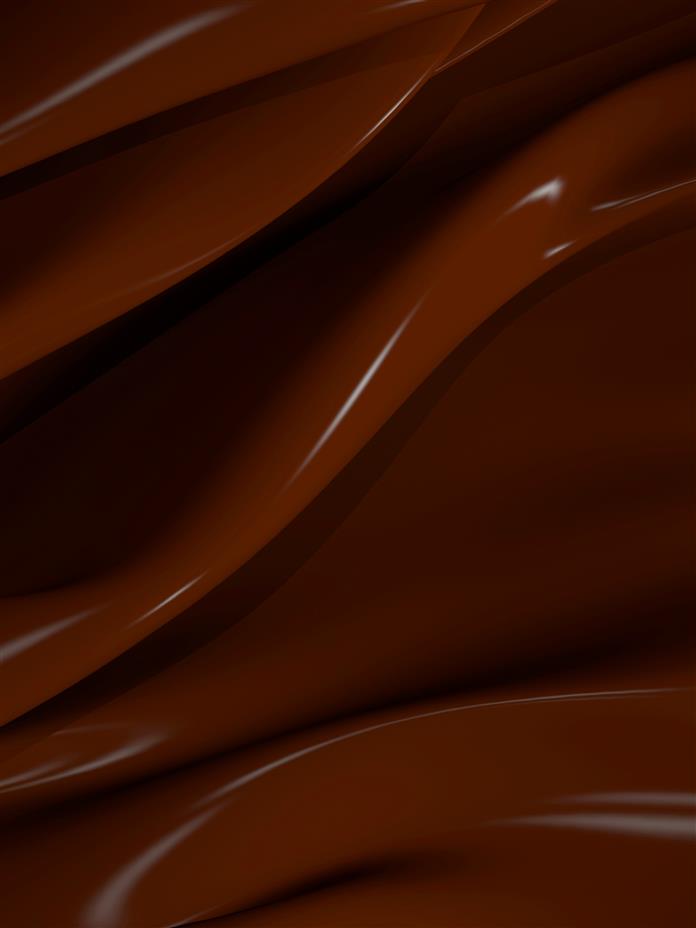If you are handling fiberglass regularly or your work involves fiberglass insulation, you may be facing the problem of fiberglass itching. If aggravated, it can also lead to an allergic condition called contact dermatitis. Know how to get rid of fiberglass itch along with some easy tips through this story.

Tap to Read ➤
How to Get Rid of Fiberglass Itch
Madhushree Kelkar


If you are handling fiberglass regularly or your work involves fiberglass insulation, you may be facing the problem of fiberglass itching. If aggravated, it can also lead to an allergic condition called contact dermatitis. Know how to get rid of fiberglass itch along with some easy tips through this story.

Vital Health Tip
If you have asthma or breathing problems, you should always wear a dust mask and keep fiberglass material away from your face while working. This will prevent the fiberglass splinters from getting into your airways and lungs.

You must have noticed how your skin starts itching suddenly when you come in contact with fiberglass material. It is a lightweight yet strong man-made material used for boats, surfboards, pipes, automobiles, hot tubs, etc. It is a fiber-reinforced polymer which is made of plastic matrix and fine fibers of glass.

Often, people who work with fiberglass are affected by its microscopic splinters or particles which get clogged in their skin. This not only causes irritation and itching, but also leads to redness and rash. At times, it can also be painful and even lead to contact dermatitis. This is because formaldehyde is used as a binding agent in fiberglass.

If you experience fiberglass itch, you should avoid rubbing that particular area, as it will push the particles further into your skin. If you wish to know what relieves fiberglass itch, here are some remedies that will help in its treatment.

Change Clothes
It is essential that if you are working with fiberglass, you must change clothes immediately after coming back home. Else, the particles from your clothes will get transferred to your skin.
It is essential that if you are working with fiberglass, you must change clothes immediately after coming back home. Else, the particles from your clothes will get transferred to your skin.

Wash Clothes Separately
Do not wash these clothes with your other clothes, as the fiberglass particles will also stick to them. Wash them separately, and rinse out the washing machine completely.
Do not wash these clothes with your other clothes, as the fiberglass particles will also stick to them. Wash them separately, and rinse out the washing machine completely.

Rinse Your Eyes/Skin
If fiberglass particles have entered your eyes and are irritating them, rinse them many times with cold water till the itching sensation goes away. A similar treatment can also be followed for the irritated parts of the skin.
If fiberglass particles have entered your eyes and are irritating them, rinse them many times with cold water till the itching sensation goes away. A similar treatment can also be followed for the irritated parts of the skin.

Use Hair/Fabric Conditioner
During your bath, you can topically apply a hair conditioner to the affected area and rinse it off. This will cause almost all the particles to go away. You can also use a liquid fabric conditioner instead of the regular conditioner.
During your bath, you can topically apply a hair conditioner to the affected area and rinse it off. This will cause almost all the particles to go away. You can also use a liquid fabric conditioner instead of the regular conditioner.

Milk
Apply some cold milk on the area which has been affected due to fiberglass particles, leave it on for a while, and then rinse it off.
Apply some cold milk on the area which has been affected due to fiberglass particles, leave it on for a while, and then rinse it off.

Cold Shower
It is said that taking a cold shower is highly beneficial for treating fiberglass itch. You will have to work up a good lather with soap & start rubbing gently in the downward direction on the affected area. Using a loofah or nylon stocking for exfoliation can also be of great help. This will help to remove the fiberglass particles from the skin.
It is said that taking a cold shower is highly beneficial for treating fiberglass itch. You will have to work up a good lather with soap & start rubbing gently in the downward direction on the affected area. Using a loofah or nylon stocking for exfoliation can also be of great help. This will help to remove the fiberglass particles from the skin.

Creams and Oils
You can also apply nourishing body lotions, body butters, moisturizers, baby oils, etc., which will help in soothing your skin. It will also remove the particles which may have been embedded deep into your skin.
You can also apply nourishing body lotions, body butters, moisturizers, baby oils, etc., which will help in soothing your skin. It will also remove the particles which may have been embedded deep into your skin.

Cortisone Cream
Cortisone cream is a topical ointment which helps to reduce inflammation. When rubbed on the area where the itch is present, it has a soothing effect. However, it is advisable that you seek your doctor's advice before trying out this cream.
Cortisone cream is a topical ointment which helps to reduce inflammation. When rubbed on the area where the itch is present, it has a soothing effect. However, it is advisable that you seek your doctor's advice before trying out this cream.

Hot Bath
Take a hot bath but not a scalding one. It will help in opening the pores of your skin and releasing the fiberglass particles. Another advantage of a hot bath is that it will cause you to sweat, and the fiberglass particles will slide out along with it.
Take a hot bath but not a scalding one. It will help in opening the pores of your skin and releasing the fiberglass particles. Another advantage of a hot bath is that it will cause you to sweat, and the fiberglass particles will slide out along with it.

Cold Bath Followed by Hot Bath
Some people also suggest that a cold bath should be followed by a hot one to remove the fiberglass particles which are clogged in your skin.
Some people also suggest that a cold bath should be followed by a hot one to remove the fiberglass particles which are clogged in your skin.

Epsom Salts
Boil some water and add one cup of Epsom salts. Let the Epsom salts dissolve, and then add it to your warm bath water. Let the area of irritation soak in the mixture for at least 30 minutes, and then rinse it off with cold water. This will remove the fiberglass particles from your skin.
Boil some water and add one cup of Epsom salts. Let the Epsom salts dissolve, and then add it to your warm bath water. Let the area of irritation soak in the mixture for at least 30 minutes, and then rinse it off with cold water. This will remove the fiberglass particles from your skin.

Masking Tape
Put a piece of masking tape, and press it against the affected area of the skin. Put pressure on it in a downward motion. Now, rip it off will full force, similar to the action of waxing body hair.
Put a piece of masking tape, and press it against the affected area of the skin. Put pressure on it in a downward motion. Now, rip it off will full force, similar to the action of waxing body hair.

This will cause the fibers to come off easily. However, beware that your body hair can also get pulled out. Don't use a duct tape instead of masking tape, as it can harm your skin.

Acetone
Acetone is commonly found in a nail polish remover. All you have to do is rub some acetone on the affected area. It will break down the fiberglass particles and ease your skin. Then rinse it off with cold water. This is not recommended if you are prone to skin allergies and infections.
Acetone is commonly found in a nail polish remover. All you have to do is rub some acetone on the affected area. It will break down the fiberglass particles and ease your skin. Then rinse it off with cold water. This is not recommended if you are prone to skin allergies and infections.

Talcum Powder
Dab talcum powder generously to the exposed areas before you start working with fiberglass. This will not allow the fiberglass particles to embed in the skin.
Dab talcum powder generously to the exposed areas before you start working with fiberglass. This will not allow the fiberglass particles to embed in the skin.

Also, you can apply talcum powder after a shower on the itchy areas to relieve the skin from fiberglass splinters. Other alternatives to talcum powder are baby powder and cornstarch. Some people also use baking soda.

Vinegar
You can also apply vinegar on the area which is itching and then go on to rinse it by having a bath.
You can also apply vinegar on the area which is itching and then go on to rinse it by having a bath.

Consult a Doctor
In spite of undertaking all these remedies if you undergo severe itching and inflammation, then you should show it to your doctor as you may be suffering from an allergy.
In spite of undertaking all these remedies if you undergo severe itching and inflammation, then you should show it to your doctor as you may be suffering from an allergy.

Tips
✓ Wear fiberglass protective clothing, i.e., long pants and a long-sleeved shirt.
✓ Also, wear gloves, socks, shoes, and glasses when working with fiberglass material.
✓ Wear fiberglass protective clothing, i.e., long pants and a long-sleeved shirt.
✓ Also, wear gloves, socks, shoes, and glasses when working with fiberglass material.

✓ Shut any openings in your clothing, like your neck, hands, and legs with blue painter's tape.
✓ Also, change your bed sheets the day after your skin starts itching.
✓ Don't scratch or push the loofah in an up and down manner, as it will embed the particles even deeper.
✓ Also, change your bed sheets the day after your skin starts itching.
✓ Don't scratch or push the loofah in an up and down manner, as it will embed the particles even deeper.

✓ Using aloe vera gel or petroleum jelly can help to relieve the affected skin area.
✓ While cleaning fiberglass, avoid touching it directly; clean it with the help of a vacuum cleaner.
✓ While cleaning fiberglass, avoid touching it directly; clean it with the help of a vacuum cleaner.

Now that you know how to stop fiberglass itch, implement these tips to relieve the discomfort. You can also take out the visible fiberglass particles with the help of tweezers. Never scratch the area (where you experience itchiness) rigorously or pick at it, as it may lead to a severe infection.

Treat the skin exposed to fiberglass immediately to relieve yourself from the stinging pain and itch. Prevention is definitely better than cure; hence, if you can't avoid coming in contact with fiberglass, please undertake the necessary safety precautions.

Disclaimer: This story on how to get rid of fiberglass itch is for informational purposes and does not intend to substitute the advice of a medical professional.